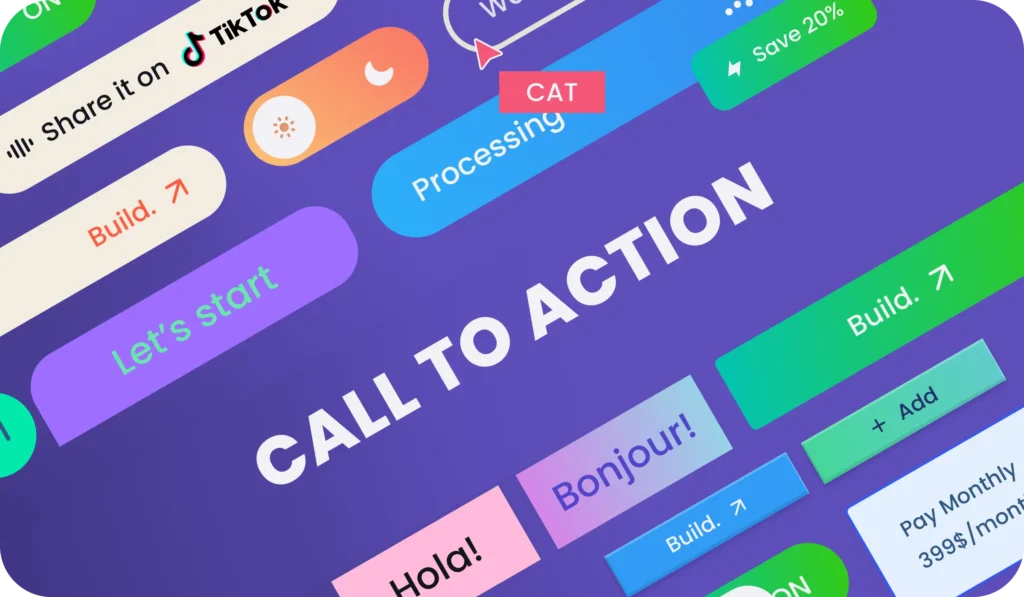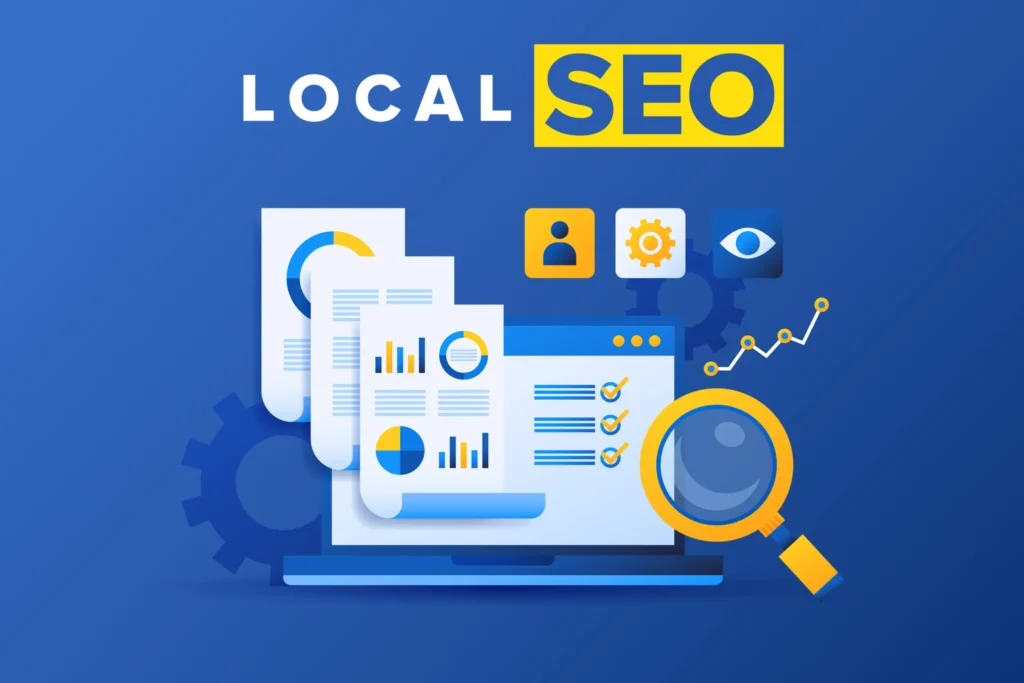For small businesses, a website is often the first point of contact with potential customers. A well-designed site not only attracts visitors but also turns them into paying clients. Here are 7 design secrets that can help you boost sales and stand out in your market.
Mobile-First, Always – Why It’s Critical for Small Business Websites

Today, over 70% of global web traffic comes from smartphones and tablets, and this number is even higher in many local markets. Google has officially adopted mobile-first indexing, meaning your mobile version is the primary version Google evaluates for ranking. If your mobile site is slow, hard to navigate, or incomplete, your search visibility will drop — even if your desktop version looks perfect.
Key Mobile-Friendly Website Design Principles:
- Responsive Design – Use flexible grid layouts that automatically adapt to different screen sizes (320px for small phones up to 1440px+ for desktops).
- Touch-Friendly Navigation – Buttons should be at least 48×48 pixels, with enough spacing to avoid accidental clicks.
- Prioritize Core Content – Place essential info like product names, prices, CTAs, and contact details above the fold on mobile screens.
- Readable Text Without Zoom – Use 16px base font size or larger and maintain high contrast for legibility in daylight conditions.
SEO Impact of Mobile-First Design:
- Faster Page Load = Higher Rankings – Mobile users expect a load time under 3 seconds; Google’s PageSpeed Insights can identify speed issues.
- Lower Bounce Rate – Easy navigation keeps visitors engaged, signaling to Google that your site is valuable.
- Better Local SEO Performance – Most local searches happen on mobile; a well-optimized mobile site improves visibility in Google Map Pack results.
Tools to Test Mobile Friendliness:
- Google Mobile-Friendly Test – Checks if your page meets Google’s mobile usability standards.
- PageSpeed Insights – Measures mobile and desktop speed separately with actionable recommendations.
Pro Tip:
Design mobile-first, then scale up to desktop. This ensures your site is lightweight, focused, and optimized for the majority of users and for Google’s ranking system.
See More: How Professional Website Design Boosts SEO Rankings
Clear & Compelling CTAs – Turn Visitors into Paying Customers

A small business website without strong calls-to-action (CTAs) is like a physical store without a cashier — visitors may browse, but they won’t convert. CTAs guide your audience toward a specific goal, whether it’s booking an appointment, requesting a quote, or making a purchase.
Best Practices for High-Converting CTAs:
Use Action-Oriented Language – Phrases like “Book Now,” “Get a Free Consultation,” “Download Your Guide” create urgency and clarity. Avoid vague terms like “Click Here”.
Strategic Placement – Place CTAs in high-visibility areas such as:
- Hero section (above the fold)
- Product or service pages
- Blog articles (end of post or in-content banners)
- Sticky navigation bars for constant visibility
Contrast & Design – Use a color that stands out from your site’s palette, with clear typography and ample white space.
Consistent Messaging – Align CTA text with the page’s content. If your page talks about free quotes, your button should say “Get My Free Quote”.
SEO & UX Impact:
- Lower Bounce Rate – Clear next steps keep users on your site longer, sending positive engagement signals to Google.
- Better Conversion Tracking – Using event tracking in Google Analytics lets you measure CTA effectiveness and optimize for ROI.
- Increased Keyword Relevance – Including relevant keywords in CTA anchor text (e.g., “Get Your Singapore Web Design Quote”) can help with semantic SEO.
Pro Tip:
Test multiple CTA variations (A/B testing) to see which copy, color, and position deliver the highest conversion rate. Even a small tweak can increase conversions by 20–30%.
See More: How to Get Your Content to Appear in Google’s AI Overview 2025
Speed as a Sales Booster – Why Every Second Counts

In today’s fast-paced digital world, website speed is no longer just a technical factor — it’s a direct driver of sales, SEO rankings, and customer satisfaction. Studies show that 53% of mobile users abandon a site if it takes longer than 3 seconds to load, and every 1-second delay can reduce conversions by 7%. For a small business, that could mean thousands in lost revenue each year.
Why Speed Matters for SEO & Sales:
- Google Ranking Factor – Page speed is part of Google’s Core Web Vitals. Slow-loading sites rank lower, making it harder for customers to find you.
- User Experience (UX) – A snappy website keeps visitors engaged, reduces bounce rates, and increases the likelihood of completing a purchase or inquiry.
- Mobile-First Era – With over 70% of traffic coming from mobile, speed optimization ensures you don’t lose impatient, on-the-go customers.
How to Make Your Site Lightning-Fast:
1, Compress & Optimize Images – Use formats like WebP or AVIF, and compress without sacrificing quality.
2, Enable Lazy Loading – Load images and videos only when they appear on the user’s screen, reducing initial page weight.
3, Use a Content Delivery Network (CDN) – Distribute content via global servers for faster loading worldwide.
4, Minimize HTTP Requests – Combine CSS/JS files and remove unnecessary scripts.
5, High-Performance Hosting – Choose a hosting provider with SSD storage, high uptime, and optimized server configurations.
6, Browser Caching & GZIP Compression – Store static files locally on the user’s browser for faster repeat visits.
Pro Tip for Small Businesses:
Run your site through Google PageSpeed Insights or GTmetrix regularly. Not only will you get a speed score, but you’ll also see Core Web Vitals metrics like Largest Contentful Paint (LCP) and Cumulative Layout Shift (CLS) — both crucial for SEO and conversions.
See More: Customised Web Applications to Streamline Your Business
SEO-Driven Structure – Building a Website Google Loves

For small businesses, a well-structured website is like a well-organized store — customers can easily find what they need, and search engines can understand your content better. Google’s crawlers follow your site’s hierarchy, and the clearer it is, the higher your chances of ranking for targeted keywords.
Key Elements of an SEO-Optimized Structure:
1, Clear Heading Hierarchy (H1–H3) – Use a single H1 for your main page title, H2 for main sections, and H3 for sub-points. This helps both users and Google grasp the content’s flow.
2, Descriptive, Keyword-Rich URLs – Instead of /page1, use /website-design-small-business. Clean URLs improve click-through rates and SEO relevance.
3, Optimized Meta Tags – Write compelling meta titles (under 60 characters) and meta descriptions (under 160 characters) that include your primary keyword and encourage clicks.
4, Internal Linking Strategy – Link related pages together. For example, from your “Web Design Services” page, link to “Pricing” or “Portfolio.” This distributes link equity and guides users deeper into your site.
5, Logical Navigation Menu – Keep menus short, clear, and mobile-friendly. Group related pages under clear categories.
6, Breadcrumbs – Show visitors where they are on your site and help search engines understand your page hierarchy.
Why Structure Matters for SEO & Sales:
- Better Crawlability – A clean structure allows Google to index more of your pages faster.
- Improved Dwell Time – When users can easily navigate, they spend more time exploring, signaling to Google that your site is valuable.
- Higher Conversions – A logical flow moves visitors smoothly from awareness (blog posts) to decision (contact or checkout).
Pro Tip for Small Businesses:
Map out your site’s architecture before you build it. Think of pillar pages (broad topics) and cluster pages (detailed subtopics) — a strategy that boosts topical authority and makes your site AI Overview–friendly.
See More: Best Website Development Agencies in Singapore 2025
Visual Storytelling – Turning Browsers into Buyers
In today’s fast-paced digital world, visual content is processed 60,000 times faster than text, making it one of the most powerful tools for small business websites. Humans are naturally drawn to visuals, and when used strategically, they can increase engagement, build trust, and boost sales conversions.
Key Visual Elements to Include:
1, Professional Photography – Use high-quality images of your products, office, and team. Real photos build authenticity far better than generic stock images.
2, Explainer Videos – A short, well-produced video can showcase your product’s benefits, demonstrate how it works, and answer common customer questions.
3, Infographics – Break down complex information (pricing, processes, comparisons) into easy-to-digest visuals.
4, Before-and-After Images – Perfect for service-based businesses to demonstrate transformation and results.
5, Customer Success Stories – Combine testimonials with photos or short video clips to make reviews more relatable and credible.
Why Visual Storytelling Works for SEO & Sales:
- Increases Dwell Time – Videos and infographics keep visitors on your site longer, which is a positive ranking signal for Google.
- Enhances Brand Recall – People remember 80% of what they see, compared to only 20% of what they read.
- Boosts Emotional Connection – Seeing your team and satisfied customers creates trust and humanizes your brand.
- Improves Shareability – Visual content is more likely to be shared on social media, increasing referral traffic.
On-Page SEO Tips for Visuals:
- Use descriptive file names (e.g., small-business-web-design-team.jpg).
- Add alt text with your target keywords for accessibility and SEO.
- Compress images to improve loading speed without losing quality.
- Use video schema markup so Google can display rich snippets in search results.
Pro Tip for Small Businesses:
Create a brand style guide for all visuals — consistent colors, fonts, and photography style. This builds brand recognition and makes your website look polished and professional.
Social Proof That Converts – Turning Skeptics into Customers

In a crowded online marketplace, trust is the currency of sales. No matter how great your product or service is, new visitors often hesitate to buy because they don’t know you yet. This is where social proof — the validation from real customers, partners, or third parties — becomes one of your most powerful conversion tools.
Why Social Proof Matters for Small Business Websites:
- Builds Instant Credibility – People are more likely to believe other customers than your own marketing claims.
- Reduces Perceived Risk – Positive feedback reassures visitors that others have successfully purchased and benefited from your offer.
- Boosts Conversions – Studies show that 92% of consumers read online reviews before buying, and star ratings can increase click-through rates by up to 35% in search results.
Types of Social Proof to Include on Your Website:
1, Customer Testimonials – Short quotes from happy customers describing their experience. Add their name, photo, and location for authenticity.
2, Online Reviews & Ratings – Showcase your Google Business Profile reviews, Facebook ratings, or Yelp feedback directly on your site.
3, Case Studies – Share detailed success stories, including the client’s problem, your solution, and measurable results (e.g., “increased sales by 45% in 3 months”).
4, Trust Badges & Certifications – Display logos of industry accreditations, security seals (e.g., SSL, Verified by Visa), or award recognitions.
5, Media Mentions – If your business has been featured in press articles, podcasts, or industry publications, highlight those logos for authority.
6, User-Generated Content (UGC) – Photos, videos, or social media posts from customers using your products in real life.
Placement Tips for Maximum Impact:
- Add a testimonial slider on the homepage.
- Place reviews near CTAs on product or service pages to encourage action.
- Dedicate a full “Success Stories” or “Client Results” page for deeper trust-building.
- Include trust badges in the footer so they’re visible on every page.
SEO Benefits of Social Proof:
- Increases Click-Through Rate (CTR) when star ratings appear in Google search snippets.
- Enhances Content Freshness if you regularly update reviews and case studies.
- Supports E-E-A-T (Experience, Expertise, Authoritativeness, Trustworthiness) — key ranking factors in Google’s algorithm.
Pro Tip:
Encourage customers to leave detailed, keyword-rich reviews (e.g., “Best web design service in Singapore for small businesses”) to help your site rank for local search queries.
See More: Best Professional Web Design Services in Singapore
Local SEO Optimization – Be Found Where It Matters Most

For small businesses that serve a specific city, town, or region, being visible in local search results can mean the difference between a steady flow of customers and struggling to get noticed. Local SEO ensures that when someone searches for services “near me” or within your service area, your business appears at the top of Google’s local listings and maps.
Why Local SEO Matters:
- High Purchase Intent – 76% of people who search for something nearby visit a business within 24 hours, and 28% of those searches result in a purchase.
- Lower Competition – You’re competing with local businesses, not the entire internet.
- Mobile-Driven – Over half of local searches are done on mobile, making visibility crucial for on-the-go customers.
Key Local SEO Strategies for Small Business Websites:
1, Location in Page Titles & Meta Descriptions – Add your city or region alongside your main keyword (e.g., “Affordable Web Design in Singapore – iCreationsLab”).
2, Include Location in Website Content – Mention your service area naturally in homepage copy, service pages, and blog posts. For example: “We provide professional website design for small businesses across Singapore, including Orchard, Tampines, and Jurong.”
3, Local Schema Markup – Implement structured data to help Google understand your business details (name, address, phone number, business hours).
4, Google Business Profile Optimization – Complete all fields (address, phone, hours, business category) and upload high-quality photos.
5, Customer Reviews & Ratings – Encourage happy clients to leave Google reviews mentioning your location and services (“Best ecommerce website design in Singapore”).
6, Consistent NAP (Name, Address, Phone) – Ensure your contact details are exactly the same across your website, social media, and online directories.
7, Local Backlinks – Partner with other local businesses, chambers of commerce, or community events to earn links from reputable local sites.
Placement Tips:
- Add your full address and map in the website footer.
- Create a “Service Areas” page listing all locations you serve.
- Embed a Google Map on your Contact page for easy navigation.
SEO Benefits of Local Optimization:
- Improves Google Map Pack visibility.
- Increases organic traffic from people in your area.
- Supports Google’s E-E-A-T by showing real-world credibility and location relevance.
Pro Tip:
Post updates, offers, and events on your Google Business Profile at least twice a month. These posts can appear directly in local search results, making your listing stand out.
Ready to Grow Your Small Business Online?
At iCreationsLab, we specialize in designing and optimizing websites for small businesses that want to boost sales, rank higher on Google, and attract more customers. Since 2008, we’ve helped business owners create fast, mobile-friendly, and SEO-driven websites that convert visitors into loyal clients.
See More: Best Ecommerce Website Design Company Singapore – 2025 Guide

